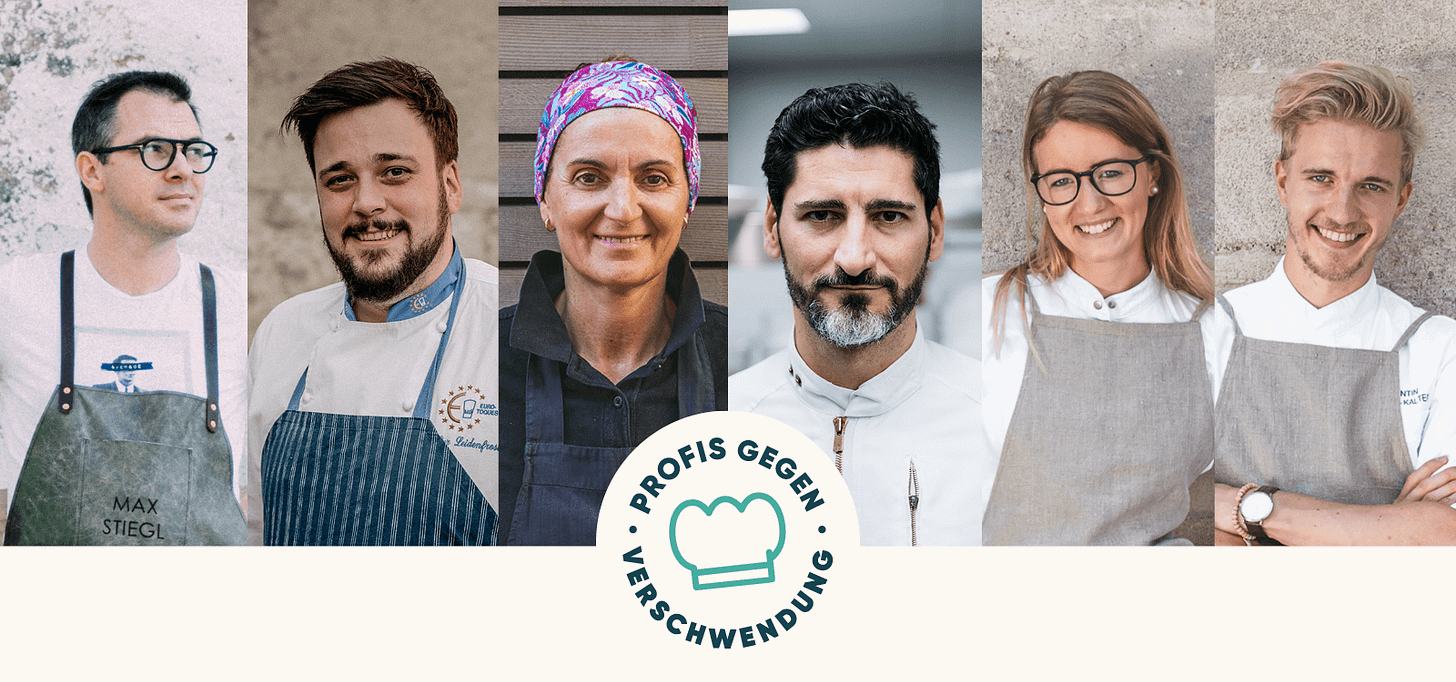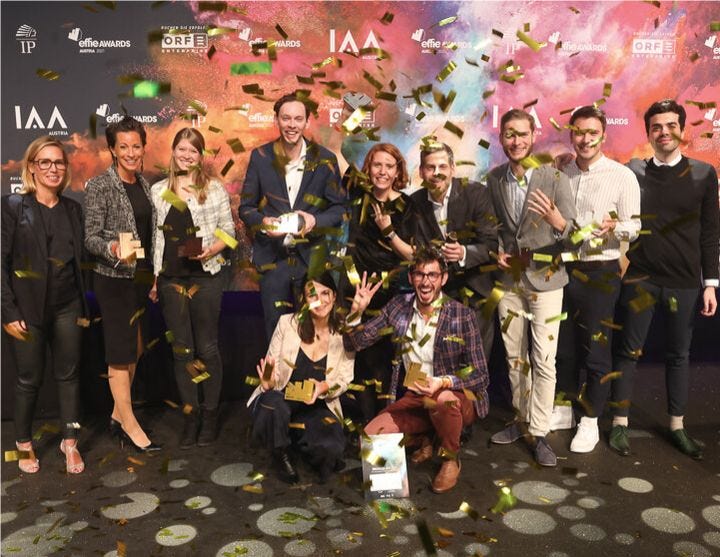🍏 Too Good To Go: From 0 to 700,000 users in 2.5 years
5 marketing secrets on how we turned the start-up Too Good To Go into a global movement against food waste and what you can learn from it for your green marketing.
➡️ You can also listen to this posting in my podcast 🎧
For 2.5 years, I was able to help shape the Too Good To Go brand as Head of Marketing. In the beginning, in true start-up style, I went to the restaurants myself to convince them to save food from going to waste with us and often heard "Who? Too Good To What?".
Hi 👋 I’m Florian Schleicher. This is the FutureStrategies newsletter. Thank you so much for reading along 💚
Brand awareness = 0
Users = 0
Partners = 0
Little by little, we managed to win over the market, and when I took my next step after two and a half years and founded my company FUTURES, my team and I could look back on an incredible marketing success story:
From 0 to over 700,000 users
Increase in supported brand awareness from 0 to 54%
1,400 press articles about the brand in 2021
Creation of the top 6 Instagram brand account with 12,000 followers
230,000 newsletter sign-ups and 340,000 push notification recipients
So today, let's look at how we did it - with all my perspectives and experiences from my role:
Successful go-to-market launch communication
Building the community (social + CRM)
Press work that continuously generates reach
Campaigns that embody the vision and attract target groups
Building a team of experts
1️⃣ Successful go-to-market launch communication
My journey as Head of Marketing began in the summer of 2019. As the second employee after our Country Manager, my first task was to prepare and execute the launch of our app.
We were given a few tools and methods from our HQ in Copenhagen to tackle the launch, but essentially we were given every freedom, expressed by my boss with a simple "You are the expert for your market - you will know what's best."
What might be too much of a blank sheet of paper for others, immediately motivated me to take action - with learnings from 4 years at the agency and my marketing work at McDonald's and Greenpeace, I had a full know-how case with me and already had a rough road map in my head.
It quickly became clear that we were going to put all our eggs in one basket for the launch:
PR - press relations. Because Too Good To Go had a decisive advantage...
The app's founders recognized a key customer need - people are overwhelmed by the climate crisis. They want to do something about it, but they don't know what they can do in their everyday lives and are looking for simple ways. At the same time, we know that food waste is omnipresent, even though nobody likes to throw food away.
We use this insight, this understanding of our target group, as the basis for our launch and our go-to-market strategy, because without this problem-solving approach, we would have fallen into the number one marketing trap.
“The more you can cater your communication style to that of your intended audience, the more effective your message will be. It is important to understand not only the preferences and needs of one’s customers, but their communication style as well. Sharp brands pay painstaking attention to customers vocabulary.”
Matt Johnson & Prince Ghuman in Blindsight
The same insight was, we assumed, also relevant for journalists: They too are frustrated with only writing about bad news around the climate crisis, so they are looking for good and local news stories that are worth telling.
So we prepared our launch for almost two months, planned a press release together with a PR freelancer, and a press event for journalists, and drew up distribution lists for the right approach to the right media.
In other words, full focus on PR.
Because PR offers an advantage that is underestimated by many start-ups: It's free coverage - good PR doesn't need a media budget, just time.
At the end of August, the time had come: at the press event, we were surprised at how well-received our story was. Every major news medium was either there or even wanted to conduct their interview with us. Within a few days, we had over 30 national media reports.
And in one fell swoop, we had almost 30,000 users in Vienna, our capital city.
That's the power of good PR.
If you want to learn more about Too Good To Go's strategy, then I recommend the next Simple & Sustainable Marketing Academy. In 4 sessions I will show you the basics of strategic and sustainable marketing and in session no. 5 I will talk to the Global Head of Creative of Too Good To Go, Carl-Emil Jensen, about what continues to make the start-up so successful.
I was also busy setting up the social media channels, but there was no focus on that, so the posts were (still) sad proof of my lack of graphics skills.
Progress over perfection.
Because after the launch, I was able to devote more time to the topic.
2️⃣ Building a community that wants to hear about our brand on an ongoing basis
Too Good To Go has always had a chicken and egg problem: for the app to work, you need users who use it and restaurants, cafés, hotels, and supermarkets that offer a range of surplus food for collection.
So while we were celebrating the success of our first 30,000 users, we had a big problem: we only had 30 businesses saving food with us. So our powerful sales team had their hands full recruiting more partners for our mission.
And as head of marketing, it was my job to support them. But since I'm not a (good) salesman, I had to find another way to help them.
Curtain up for Too Good To Go's social media presence.
With so much media buzz surrounding our brand, it wasn't difficult to build up reach among users on Instagram and Facebook (TikTok didn't exist yet). This also made our channels exciting for our potential partners. Every week, we put the latest companies that were saving valuable food from going to waste with us in the spotlight.
“It’s not about your product - it’s about their problem.”
Zoe Scaman
This made the job easier for our fantastic sales team - because they could offer their target group another advantage - access to our growing social media community.
Later we adapted this access and only mentioned the particularly attractive partner companies, but in the beginning, this highlighting was a boost for their awareness.
At this point, we also started to set up our newsletter and push notification strategy. With the newsletter, it was essential for us to produce added value for our B2C target group, so we also offered useful tips on how to avoid food waste in everyday life outside of the app in the form of recipes and assistance, because, as Guy Kawasaki said:
“Provide good content and you'll earn the right to promote your product.”
In the meantime, I have also been able to hire my first two marketing employees: A PR manager and a digital manager. Two superheroes, without whose work we would never have become so successful.
A marketing machine like the one we set up can't just depend on one person. Success requires investment.
Added value and authenticity were at the heart of our content strategy - the most successful posts were often simply videos photographed in the office.
A quote that inspired me back then comes from Marty Echt, CMO of Harley Davidson:
“When you walk into our booth, you should feel as if you’ve just walked into a garage where people have grease - our grease - under their fingernails.”
After a successful app launch and ongoing communication with our two target groups - B2C and B2B - it was time to set the course for long-term and ongoing growth.
3️⃣ Press work that continuously generates reach
Encouraged by our first PR successes around the launch, we had a perfect template for all other city launches. But what do we do when this story has been told so often that it no longer has any news value?
For me, this was the real start of our long-term PR strategy.
We continuously developed stories that were driven by our brand vision:
Too Good To Go dreams of a planet without food waste.
A good vision not only provides orientation for all strategic decisions but also a basis for successful PR work - visions are the key to marketing strategies.
In PR in particular, it is important not to communicate in a promotional way, but to adopt an external perspective. First of all, we have to develop an exciting story for journalists - the gatekeepers to our actual target group.
So we set out on a search and here is a small best-of of our press stories, which often went to small distributors in niches but also to national media:
Food waste in an infographic
How 3 bakeries are declaring war on food waste
2 tons of potatoes saved from going to waste
Saving popcorn from the movies for the home
This is how much food is thrown away across the country
We were not only interested in reaching the users of our app.
But also awareness in the gastronomy sector. Because if you're in the newspaper, on TV, and on the radio, you gain more credibility.
Our media consultant at the time, Gregor Fauma, summarized the most important aspect of our PR strategy in this interview:
"Good press work means making journalists part of your own network. Journalists don't want to feel pressured, paid or pressured. They want to write their stories of their own accord - and need informants to do so.
You will then be seen as such and should act accordingly: Maximum concise information, prepared in such a way that the media representatives do not have an unnecessarily time-consuming job when they have to translate the texts/content into those of their readers and viewers. It's about abstracting and simplifying the information."
And here's an insider tip for PR stories - the 5-sentence technique:
"Part 1 is a statement, a thesis. Here you create facts with a main sentence.
Parts 2, 3 and 4 follow: Arguments, aspects or examples are given here to support the thesis. They are also broken down into short sentences and without any excesses.
Part 5 is the conclusion, presumably the customer benefit in the business case, to which the thesis and arguments ultimately lead."
Gregor Fauma
With the ongoing marketing mix of PR, social media and our CRM channels, we managed to get an engine running for our sustainable growth.
Within 1.5 years, we were on track for success: 50% of our users actively recommended us (saving a massive amount of budget) and the conversion of registered users to active users grew by 30% within a year. We were among the top 3 countries in terms of app activity.
4️⃣ Marketing campaigns that embody the vision
The duty was fulfilled, our app had arrived and both users and partner companies were growing. So we could have just sat back and more or less watched it grow.
But there was this vision of a planet without food waste and we weren't just creating it with the app.
So we launched two major campaigns that had no direct effect on our core business:
🧑🍳 Professionals against food waste
Our B2B marketing campaign, in which we joined forces with 6 of the best chefs in the country to raise awareness of food waste in top gastronomy. In short videos, they gave insights into their tips for more saved food, and recipe recommendations for leftovers and thus motivated other businesses to think about Too Good To Go.
In just 2 weeks, we reached 1,200,000 contacts with an engagement rate of 2% and managed to reduce the costs of our B2B inbound funnel by 82% and achieve a CAC of € 700. An incredible step considering how much time a single salesperson invests in the acquisition of a business.
Incidentally, the campaign was implemented by our fantastic B2B marketing expert together with Falstaff magazine, who helped us find the "professionals" and produce the videos in the kitchens.
💚 Look, Smell, Taste, Don’t Waste - Often Good After
This campaign is one of the ones I'm most proud of in my career and I still think it's one of the best green marketing campaigns in the world.
Conceived by the Global Creative Team in Copenhagen and implemented by our Public Affairs Manager, it focused on one key learning:
10% of all food ends up in the trash because of misunderstandings around best-before dates.
Many consumers believe that food is poisonous as soon as it has passed its sell-by date. However, they are often edible for longer, in short, "good".
So we launched the national awareness campaign "Look, Smell, Taste, Don’t Waste". The challenge for Too Good To Go was that we not only wanted to draw media attention to the fact that everyone can simply look at the food, smell it, or try it before it ends up in the bin, but also communicate directly at the point where the best-before date is printed.
That is why we started a collaboration with 26 national and international food producers at the time, who printed our information label on ALL their products.
Not a single cent was paid - companies wanted to be involved because they consider their products to be valuable. We wanted our label on their products because our vision guided us.
The result was one of the best campaigns ever because after just 10 days we had:
+150 press reports about "Often Good After" campaign
13,000 visits to our landing page with a dwell time of over 2 minutes
1 support video from the Minister for the Environment
800,000 impressions through influencers
A national advertising campaign that had an ROI of 300%
This green marketing campaign was a win-win-win for everyone.
✅ Producers who were able to position themselves as (more) sustainable.
✅ Consumers, who now know how they can save food at home.
✅ And our environment, which is happy because valuable food ends up where it belongs.
“Sustainability is a game with no losers. The world gets a little bit better - a little healthier, a little more beautiful, a little more just and free - and you get to enjoy what it feels like to have made that difference.”
Solitaire Townsend
As Head of Marketing, I was also delighted that we were able to win 4 EFFIEs (awards for the most efficient campaign of the year) with our campaign.
Incidentally, we had a preparation time of over 6 months for this campaign.
Great successes take time and are not born overnight.
5️⃣ A team of experts
Marketing without a strategy is like cooking without a recipe.
And marketing without experts is like cooking without a spoon and a pot.
I see time and again how start-ups in particular cut back on the marketing team.
When I ended my journey at Too Good To Go after 2.5 years, our marketing team consisted of 7 people.
Every big brand, every magic brand - from McDonald's to Airbnb to Apple, LEGO, Patagonia, and Oatly has teams of experts. Yes, that is an investment. But without cooking utensils, it will be difficult to put a dish on the table that never fails to delight.
This is why Too Good To Go invested in experienced marketing experts, strategists, social media and PR professionals, graphic designers, public affairs specialists, and B2B marketing experts right from the start.
Initially in collaboration with great freelancers, then with permanent team members.
I am incredibly proud to have been part of this team and I know that without the work of all my colleagues - both nationally and internationally - we would not have had all this success.
So here are 9 of my learnings in a nutshell on how we made it from 0 to 700,000 users with Too Good To Go and a well-oiled marketing machine.
⭐️ 9 Marketing Learnings from Too Good To Go
A good marketing strategy has 3 components: Diagnosis, guidelines (including a vision), and actions. In this order.
Preparation time is essential for success. Take enough time for strategy and planning.
Understand in the diagnosis what drives and moves your target group - before you communicate, this applies to B2C and B2B (and journalists).
Get experts, marketing is not a part-time job. Freelancers are a perfect bridge to full-time employees.
PR is the most underestimated marketing tool for start-ups. All you need are good stories and an understanding of the process.
Focus, focus, focus - it's better to get one topic, one region, and one channel right first instead of dancing on too many balls
Find external partners and multipliers to help you get closer to your vision and establish long-term relationships.
If you want to change consumer behavior sustainably, you have to think bigger than just your product. Your brand must stand for more.
Strategic marketing is an art and just because many people believe that they can "do marketing on the side" doesn't mean that anything good can come of it.
By the way:
If you're looking for final proof of the difference between experts and beginners, scroll down to the very beginning of Too Good To Go's Instagram account. There you can see what happens when a marketing strategist writes and designs social media posts 😉
Thanks for reading along,
PS: You can also read this posting in German.









